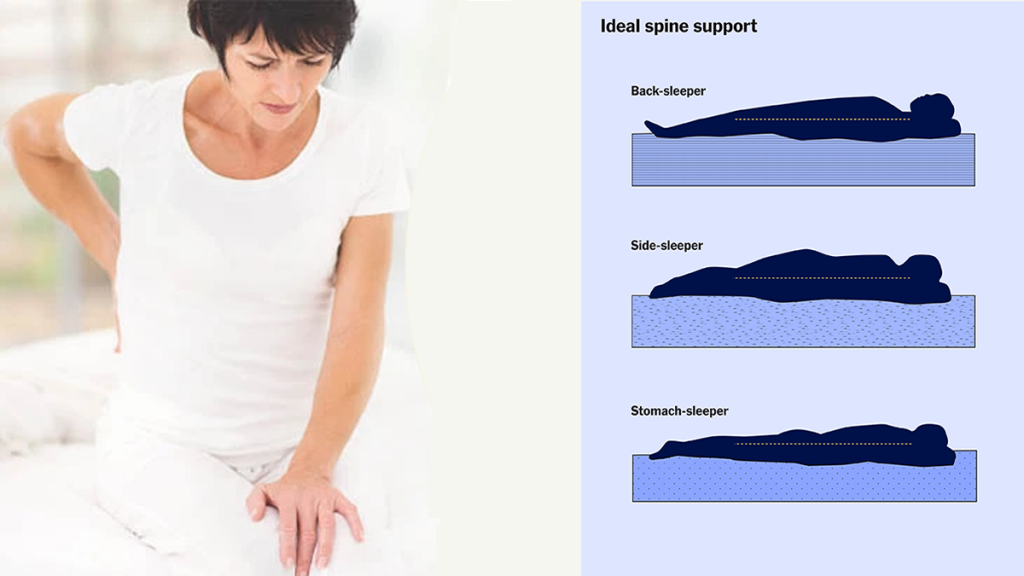Sleep Talk Blog, Bed and Mattress Guides
Does mattress thickness matter?
Table of Contents
The thickness of your mattress plays a crucial role in your sleep quality, but it's not as straightforward as "thicker is better." The impact of thickness on comfort and support largely depends on the materials used in the manufacturing process and your individual sleep needs.
The materials used in manufacturing are the primary factor determining a mattress's thickness. Traditional spring mattresses typically need more depth than pure foam varieties to accommodate their internal spring system properly. Don't be put off by a thinner foam mattress - in many cases, it can provide excellent support without the extra bulk that springs require.
When you're choosing your perfect mattress, remember that firmness, rather than thickness, should be your primary concern. That said, a thicker mattress often provides a more luxurious, plush experience. Why? Because additional thickness usually means more layers, which translates to enhanced cushioning and support throughout the night. Think of it as having more 'zones' of comfort working together to support your body.
The way different materials work with your body is fascinating. You'll notice that you tend to rest on top of a sprung mattress, whereas with a foam mattress, your body gently sinks into the surface. When you're mattress shopping, pay attention to how each type feels and consider which sensation better suits your sleeping style and comfort preferences.
Spring Mattress Thickness
Spring mattresses incorporate an internal support system topped with comfort layers, which naturally requires more thickness than their memory foam counterparts. It's like having a foundation and multiple storeys in a building - each layer serves a specific purpose.

While there's no universal rule carved in stone, sleep experts generally agree that 23cm represents the minimum thickness for a quality sprung mattress. Why this specific measurement, you might wonder?
The 23cm guideline exists because this depth allows for the optimal combination of springs and comfort layers. Think about it - in sprung mattresses thinner than 23cm, the springs must take up most of the available space, leaving precious little room for the comfort layers that make your sleep experience truly enjoyable.
You might be curious about the difference between pocket sprung and open coil mattresses regarding thickness. Interestingly, there isn't much variation between these two types.
Both typically range from 23cm to 30cm, though you'll find that pocket sprung mattresses tend to dominate the higher end of this range, often offering more sophisticated comfort layers.
Foam Mattress Thickness
When it comes to foam mattresses, there's an interesting relationship between softness and thickness. The softer you want your foam mattress to be, the thicker it needs to be. This makes perfect sense when you think about it - without springs to provide support, the only way to achieve both softness and support is through additional thickness.
For firm foam mattresses, we recommend a minimum thickness of 15cm. This depth allows for multiple layers of different foams - reflex foam for support, soft foam for comfort, and memory foam for that perfect body-contouring feel. You might wonder why 15cm specifically?
Well, anything thinner simply wouldn't provide adequate support, especially for adults. At 15cm, you've got sufficient depth to support even heavier individuals, provided the mattress maintains its firm feel.

While there's no universal rule carved in stone, sleep experts generally agree that 23cm represents the minimum thickness for a quality sprung mattress. Why this specific measurement, you might wonder?
The 23cm guideline exists because this depth allows for the optimal combination of springs and comfort layers. Think about it - in sprung mattresses thinner than 23cm, the springs must take up most of the available space, leaving precious little room for the comfort layers that make your sleep experience truly enjoyable.
You might be curious about the difference between pocket sprung and open coil mattresses regarding thickness. Interestingly, there isn't much variation between these two types. Both typically range from 23cm to 30cm, though you'll find that pocket sprung mattresses tend to dominate the higher end of this range, often offering more sophisticated comfort layers.
When it comes to foam mattresses, there's an interesting relationship between softness and thickness. The softer you want your foam mattress to be, the thicker it needs to be. This makes perfect sense when you think about it - without springs to provide support, the only way to achieve both softness and support is through additional thickness.
For firm foam mattresses, we recommend a minimum thickness of 15cm. This depth allows for multiple layers of different foams - reflex foam for support, soft foam for comfort, and memory foam for that perfect body-contouring feel. You might wonder why 15cm specifically?
Well, anything thinner simply wouldn't provide adequate support, especially for adults. At 15cm, you've got sufficient depth to support even heavier individuals, provided the mattress maintains its firm feel.
If you're considering a soft to medium foam mattress, look for a minimum thickness of 25cm. This extra depth is crucial because it allows the foam to compress comfortably without bottoming out, even under your body weight.
Here's an interesting fact: foam mattresses are typically about 30% thinner than their sprung counterparts. This difference exists because springs account for roughly 30% of a sprung mattress's thickness. Don't let this fool you, though - a well-designed foam mattress can be just as comfortable and supportive as a thicker sprung version.
Hybrid Mattress Thickness
Hybrid mattresses, which cleverly combine springs and foam, generally match sprung mattresses in thickness. However, luxury hybrid models often exceed standard thickness, incorporating additional comfort layers for an even more indulgent sleep experience.
You'll typically find hybrid mattresses ranging from 25cm to 35cm in thickness. These mattresses use a specially designed spring system that differs from traditional sprung mattresses - it's more compact and efficient, allowing for optimal use of space while maintaining excellent support properties.
You might be wondering about the unique construction of hybrid mattresses. Well, here's something interesting - the thickness in hybrid mattresses primarily comes from foam layers rather than springs.
This design feature is particularly crucial for 'mattress in a box' brands, as foam can be conveniently rolled and compressed, making it significantly more compact than traditional sprung mattresses for shipping. When you look at the composition of hybrid mattresses, you'll typically find they maintain a 20-80% springs-to-foam ratio.
If you're considering a luxury hybrid mattress, you'll discover some impressive models reaching up to 35cm in thickness. These premium options often feature exceptionally thick foam layers and, in some cases, incorporate multiple rows of springs cleverly stacked upon one another for enhanced support and comfort.
Now, you might think that a thicker mattress automatically means better comfort and support, but it's not quite that straightforward. While thickness can certainly contribute to comfort, what really matters is the quality of materials used and how cleverly the layers are arranged.
Here's a fascinating example - you could find a 15cm foam mattress that provides a superior sleep experience compared to a 25cm version, simply because the thinner mattress features a more sophisticated layering system.
When it comes to sprung mattresses, here's something you might not know - it's not the overall thickness that determines the mattress's longevity, but rather the thickness of the base layer.
Why? Because mattresses with a more substantial base layer tend to last longer, as this layer is responsible for maintaining the mattress's structural integrity. When the base layer begins to fail, you'll notice sagging in the affected areas.
For foam mattresses, the relationship between thickness and durability is quite different. Thicker layers help distribute stress more evenly across the bed, which can significantly improve its lifespan.
While thinner foam mattresses might be more susceptible to wear, you'll likely find little noticeable difference in durability between a 15cm and 25cm model in everyday use. It's worth considering these factors when making your choice, as they'll impact your sleep experience for years to come.

